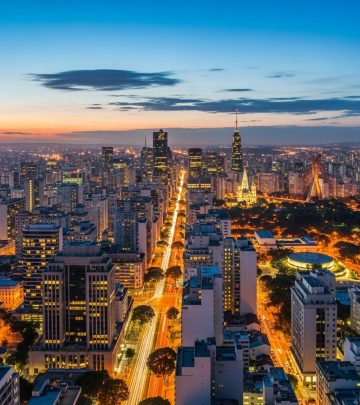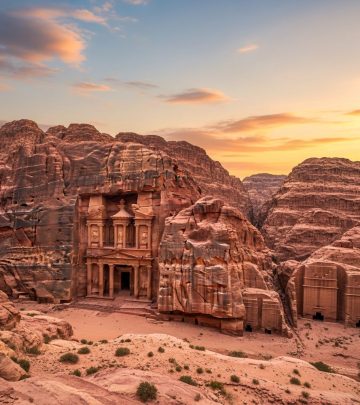Salt Galata: Istanbul’s Iconic Hub of Art, History & Research
Immerse yourself in the architecture, history, and dynamic culture of Salt Galata—one of Istanbul’s most fascinating modern cultural landmarks.

Salt Galata stands where history, art, and public life converge in Istanbul. Occupying a grand 19th-century building on Bankalar Street in Karaköy, it combines original architectural splendor with a modern vision—offering captivating exhibitions, an expansive research library, a celebrated café, public programs, and innovative archives. Whether you’re an architecture enthusiast, a history buff, a researcher, or simply looking for a unique cultural day out in Istanbul, Salt Galata is an unparalleled destination.
At a Glance: Why Visit Salt Galata?
- Stunning neoclassical architecture by Alexandre Vallauri
- Home to the Salt Research Library and Ottoman Bank Museum
- Hosts contemporary exhibitions and public programs
- Features a stylish café, bookstore, and spaces for research or relaxation
- Located in historic Karaköy, walkable from the Galata Bridge and major transit lines
History and Architectural Transformation
From Ottoman Bank Headquarters to Cultural Powerhouse
The iconic structure at the heart of Salt Galata began its story in 1892 as the headquarters for the Imperial Ottoman Bank. Designed by renowned French Levantine architect Alexandre Vallauri, it quickly became a symbol of Istanbul’s globalizing financial sector, with its imposing neoclassical façade and intricate interior features reflecting the ambition of an age when Karaköy (then known as Voyvoda Street) was the city’s banking nerve center.
Over time, Bankalar Street flourished as a financial hub, lined with institutions such as the Central Bank, İş Bank, and Deutsche Orient Bank—each housed in elegant brick or stone structures, often displaying Art Nouveau and Rococo flourishes. Even as Istanbul modernized, the street retained its historic character, and the bank’s edifice survived as a striking monument to both Ottoman and early Republican architectural tastes.
Transformation and Adaptive Reuse
With the establishment of the Turkish Republic, the locus of finance shifted to Ankara, and Bankalar Street underwent waves of change—becoming, through the 1940s and 1950s, a center for electrical manufacturing and related commerce. By the late 20th century, preserving heritage buildings by repurposing them became a rising trend in Istanbul.
In 1998, Garanti Bank acquired the building, preserving its historic office functions while setting the stage for major restoration. The result was a careful balance of conservation and innovation: Mimarlar Tasarım, under Aga Khan laureate Han Tümertekin, led the adaptive reuse, collaborating with architect Yegân Kahya. Their approach: retain the ‘soul’ of the place by restoring and highlighting its original materials and patina while integrating clearly modern interventions. The building finally reopened as Salt Galata in November 2011, following a complete transformation into a multi-level public cultural center respectfully attuned to its heritage.
Architectural Features: Past Meets Present
- Eight floors: including multi-level basements, a gallery, and new rooftop spaces
- Carefully restored marble staircases, cast-iron elements, and original brickwork
- An inner courtyard ringed with balconies, maximizing both light and openness
- Distinctly modern interventions—such as glass and steel walkways or event spaces—are placed to emphasize contrast with historic details
The result: a building where restored period features meet sleek contemporary forms, creating a dialogue between eras.
What to See and Do at Salt Galata
The Salt Research Library: Istanbul’s Knowledge Sanctuary
Salt Galata is home to one of the most remarkable organizations for research and scholarship in Turkey—the Salt Research Library. This space is much more than a conventional library: open to the public, it offers a vast and unique collection of over 100,000 print and digital resources spanning art, architecture, urbanism, visual culture, social sciences, and the economic and social histories of Turkey and its neighbors.
- Main Reading Room: 90-seat study hall on the ground floor
- Ferit F. Şahenk Hall: 40 additional seats for in-depth research at level -1
- Free access: The library’s resources, internet, and archives are free for visitors
- Digital Archive: Access to digitized collections and special projects
- Specialized collections: Architecture, urban planning, economics, design
Both casual readers and professional scholars will find Salt Research an inspiring place to work or browse. The variety and depth of resources—printed books, journals, rare documents, and multimedia content—make it invaluable for exploring Istanbul’s many layers of history and culture.
Exhibitions and the Ottoman Bank Museum
Salt Galata is not just about study—it is an exhibition space with a strong focus on contemporary art and urban history. The lower floors, particularly the beautifully restored Ottoman Bank Museum, explore both the history of Turkey’s financial system and its intersections with political and social transitions. Temporary exhibitions showcase visual culture, digital arts, architecture, and the transformation of urban life, bringing together works by local and international artists as well as collaborative installations and curated talks.
- Changing Exhibitions: Rotating lineup reflecting visual culture, urbanism, social research, and cross-disciplinary projects
- Museum Spaces: Original bank vaults and offices, restored as immersive galleries and learning spaces
- Public Programs: Talks, screenings, and workshops complement the exhibitions
- Open Archive: On the upper floors—offering insight into local culture and urban change
With so much to explore, every visit promises new discoveries.
Café, Courtyard, and Bookstore: Space for Meeting and Reflection
The ground floor hosts a spacious café—a favorite spot for both visitors and locals to relax, work, or socialize. Its contemporary design blends beautifully with the building’s historical details. The adjacent bookstore “Robinson Crusoe 389” specializes in art, design, and urban studies, making it an ideal stop to browse publications after the exhibitions or library.
An inner courtyard, accessible from the entrance, offers natural light and a sense of serenity rare in the heart of vibrant Karaköy. Others areas include:
- Cloakroom and reception area for visitor services
- Workshops and studios on the first floor for creative events and programming
- Administrative offices and archives on upper floors
- Event halls for lectures, film screenings, and special exhibitions
Visiting Salt Galata
Location and Accessibility
| Address | Bankalar Caddesi 11, Karaköy, 34421 Istanbul, Turkey |
|---|---|
| Neighbourhood | Beyoğlu (Bankalar Street, Karaköy), close to the Golden Horn |
| Transport | Tram, metro, and bus connections (short walk from Galata Bridge) |
Opening Hours
- Tuesday to Saturday: 11:00 a.m. – 7:00 p.m.
- Sunday: 11:00 a.m. – 6:00 p.m.
- Closed: Mondays, New Year’s Day, 1st May (Labor Day), and the first two days of Ramadan and Eid
Admission: Entrance to Salt Galata, including the library and exhibitions, is free for all visitors.
Facilities and Accessibility
- Accessible entrances and facilities for visitors with mobility needs
- WiFi available throughout the building; laptop-friendly spaces
- Elevators and stairways for vertical access to all floors
- Restrooms located on each principal public level
Guided Tours and Events
- Public orientation programs and guided tours available on select dates
- Special event spaces—including a rooftop hall with views of the Golden Horn—can be rented for private events
- Schedule of lectures, screenings, workshops, and symposia posted on Salt’s official website
Salt’s Other Destinations: Expanding the Vision
Salt Galata is part of a broader cultural network under the Salt organization, which includes:
- Salt Beyoğlu: Located on Istiklal Avenue—a six-floor space renowned for contemporary art exhibitions, events, and a rooftop café
- Both sites also feature the Robinson Crusoe 389 Bookstore during Salt’s opening hours
Each venue operates as a vibrant node in Istanbul’s cultural life, fostering exchanges across art, design, urban research, and social history.
Restoration Philosophy and Recognition
Salt Galata’s restoration exemplifies modern conservation: every intervention aimed to preserve, rather than replace, the original material. Architect Han Tümertekin’s guiding vision emphasized keeping ‘the spirit’ of the building alive—original marble, wood, and stone features were carefully cleaned and stabilized, while all new additions remain visibly contemporary, respecting historic layering without pastiche.
Contemporary design elements—such as glass-walled archives, minimalist event spaces, and transparent partitions—allow visitors to visually track the building’s architectural evolution. The project has been widely cited as a model for adaptive reuse across Turkey and internationally, blending public accessibility, cultural value, and urban heritage.
Why Salt Galata Matters
- Living heritage: A building once central to Ottoman and early Republican finance is reborn as a center for Istanbul’s contemporary creativity and learning
- Free, open-access resources: Empowering students, artists, and lifelong learners
- Architectural significance: A masterclass in repurposing grand heritage spaces for the public good
Salt Galata is more than a monument—it’s a thriving engine of culture, conversation, and possibility in the heart of Istanbul.
Frequently Asked Questions (FAQs)
Q: Is Salt Galata suitable for families and children?
A: Yes, Salt Galata welcomes visitors of all ages. While much of its programming appeals to adults—researchers, art lovers, students—families with older children often enjoy the exhibitions, museum spaces, and public workshops. Some events are specifically designed for youth audiences.
Q: Can anyone use the Salt Research Library?
A: Yes, the library and reading rooms are open to the public. Registration may be required for borrowing materials or using special archive collections, but browsing and on-site use are free for all.
Q: Does Salt Galata have a café or restaurant?
A: Yes, there is a stylish café on the ground floor, serving coffee, tea, light meals, and pastries, making it a popular stop for both visitors and locals.
Q: Are the exhibitions permanent or do they change?
A: Salt Galata features both permanent installations (notably the Ottoman Bank Museum) and regularly changing exhibitions focusing on art, urbanism, and culture. Each visit may bring new displays or events.
Q: Is Salt Galata accessible for people with disabilities?
A: Yes, the building has accessible entrances, elevators, and updated restroom facilities to accommodate visitors with mobility needs.
Q: How can I find out about upcoming events or guided tours?
A: Visit Salt’s official website or social media for the latest schedule of exhibitions, workshops, events, and tour information. Some events may require advance registration.












